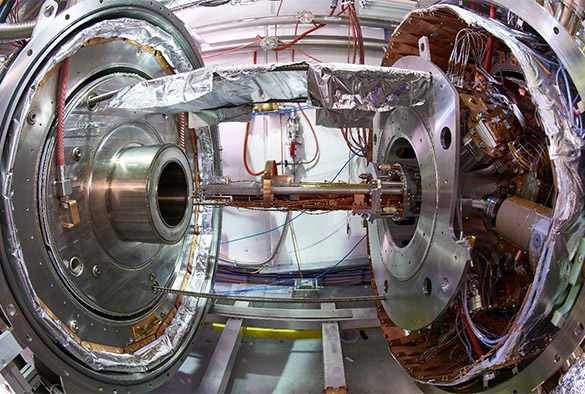AEgIS researchers take part in ‘I’m a scientist’ outreach project

AEgIS, one of the antimatter research experiments at CERN, is not only pushing the boundaries of science but also making efforts to promote science education and awareness through its participation in a live-chat based outreach project called "I'm a Scientist". The project is hosted on a webpage that includes the CERN Zone section, which provides an exclusive behind-the-scenes look at modern science in motion and an opportunity for students and teachers to connect with the scientists working on the various projects.
AEgIS provides a team of six people, including Prof Carsten P Welsch, Head of the QUASAR Group, who take part in live-chats every two weeks with the aim of answering questions about science, their research, careers and goals. The questions are moderated before being published to ensure their appropriateness and relevance, and the answers come directly from the scientists themselves. The project has been running for half a year now and has attracted over 100 students who have been reading the profiles of the scientists, asking questions, and taking part in live chats.
The project was created in response to an STFC study that found that while 80% of young people believed that science was important and necessary for the future, only about 20% of the same group stated they wanted to become a scientist. The aim of the project is to inspire and encourage more young people to consider science as a career option by providing them with an opportunity to connect with scientists, ask questions and learn more about science.
One of the typical questions asked by students is "What is the point in trying to create antimatter?" The typical answer provided by scientists is that understanding the properties of antimatter could help us get closer to understanding the "matter-antimatter asymmetry problem". This is one of the big questions in physics that has baffled scientists for a long time, as we expect the Big Bang to have produced matter and antimatter in equal quantities, but we don't see that in the universe around us. Additionally, not all antimatter has to be made costly at CERN in collisions - in fact, anti-electrons or "positrons" are very likely being made in a hospital near you right now through radioactive decay, for use in Positron Emission Tomography (PET), which is a very important medical tool and a great example of an application of particle physics.
Through its participation in the "I'm a Scientist" project, AEgIS hopes to inspire more students to pursue careers in science and to promote a better understanding and appreciation of the importance of science in our world.
*Image:
The AEgIS 1T antimatter trap stack, with the 1T magnet vessel to the left and the 5T magnet vessel to the right. Credit CERN.